You may have noticed, insurance costs seem to have escalated above and beyond inflation rates. With the cost of living continuing to rise, a big insurance bill might not be the most welcome arrival in the mail right now. However, despite its rising cost, insurance particularly for homeowners and renovators, might be a cost worth carrying given the risks involved with not being insured.
 For homeowners
For homeowners
Let’s be honest, it’s not cheap to own a house. It’s not especially cheap to insure it either, but its even more costly to repair a home should disaster strike and your home somehow gets impacted. Essentially, insurance is all about risk assessment. You reduce the risk of huge out of pocket expenses when you stay covered by insurance, even though the risks of damage occurring in the first place may be relatively low. It’s a smaller long term cost to pay to avoid a potential catastrophic expense out of the blue. Anything we value and have invested large amounts of money into deserve some form of protection. Even if its costing us more, and with rising costs of construction and a strong housing market an increase in the cost of home insurance isn’t surprising.
Home insurance is usually offered via tiers, and you can choose to cover your home, your contents or both so no matter whether you own your own place or are renting, you can protect that which you value.
Extras
Accidental damage is an extra level of protection you may choose to opt in to and does incur additional costs, but it allows you to claim the replacement of many household items should they get damaged by accident (say a tennis ball goes through a window, or a television gets knocked over by your cat).
Portable contents are items insured for accidental loss or damage any time at your home, or when temporarily removed from the home (check your policy for inclusions and limitations). If you have a fancy engagement ring or a platinum watch, it may be worth getting them insured for portable contents so they can replaced should they be lost or stolen.
As with all insurance contracts, ensure you check claim limits, inclusions, exclusions and terms and conditions. Legal jargon can be a tad confusing so speaking to your insurer over the phone and asking lots of questions before committing is a good idea if you’re unsure as to what is included and what’s not.
 For renovators
For renovators
Before engaging tradespeople for any home renovation or building project do your due diligence and check they have adequate insurance, including public liability, workers compensation and home warranty insurance. This protects you (and them) and ensures any property damage caused by negligence or accidents while on your property are covered by their public liability insurance rather than your own home insurance.
It’s always a good idea to let your insurer know about planned renovations, including the type of work being done. If you need to make a claim while renovations are underway, if you’ve already alerted the insurer that renovations have begun, you’ll hopefully avoid red tape and additional complications relating to your claim.
Why have insurance premiums increased?
Premiums are regularly reviewed and take into account a number of risk factors including location and construction, claims history, type of cover selected and indexation of sum insureds, as well as business expenses, including operating and reinsurance costs.
NSW Emergency Services Levy
As well as the general costs of insurance increasing this year, you will have noticed the NSW Emergency Services Levy has also increased marginally. Your insurance bill will include a clearly itemised component on your insurance schedule and is a percentage of your base schedule. The NSW Emergency Services Levy provides funding for emergency services in NSW, including Fire and Rescue NSW, the NSW Rural Fire Brigade Service and the State Emergency Service, all of which play roles in keeping communities safe. Insurers have an obligation to contribute to the funding of NSW emergency services, and do so through the NSW Emergency Services Levy.
 How to reduce insurance costs
How to reduce insurance costs
It’s always worth shopping around if you feel your premium has gone up significantly compared with last year (though you’ll likely find costs have soared across the board). One way to balance out the extra costs is to opt in for monthly bills, if the provider offers this at no extra cost. Most home and or contents insurance is available as either a yearly lump sum or a monthly payment plan which helps to soften the impact of the costs across a full year.
Enquire with your insurer about loyalty discounts for continued coverage. Additionally, maintaining a claim-free record could help lower your premium, so it's worth checking if this applies
You may also choose to adjust some of the items on your insurance policy, such as reducing the total sum of contents insured, the amount you insure your home itself for, reassessing the excess you pay, and removing extras. However, be mindful that when you reduce insured amounts, you are also reducing your level of protection.

Alison Gallagher is a freelance writer, resourcefulness expert, entrepreneur and mother of two young children. She has been featured in various publications including Stellar Magazine, Australian Health and Fitness Magazine, and Cleo Magazine. Alison is particularly passionate about sharing practical tips on how to live simply, sustainably and seasonally.






